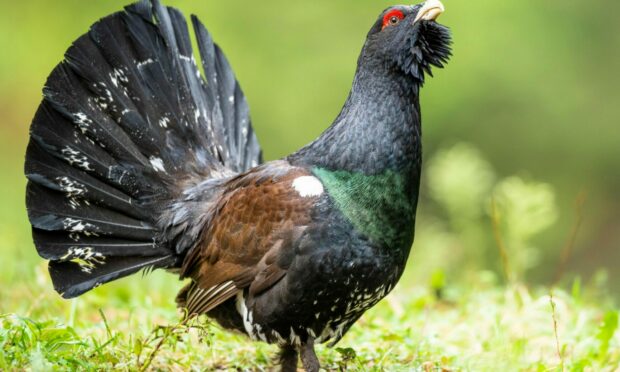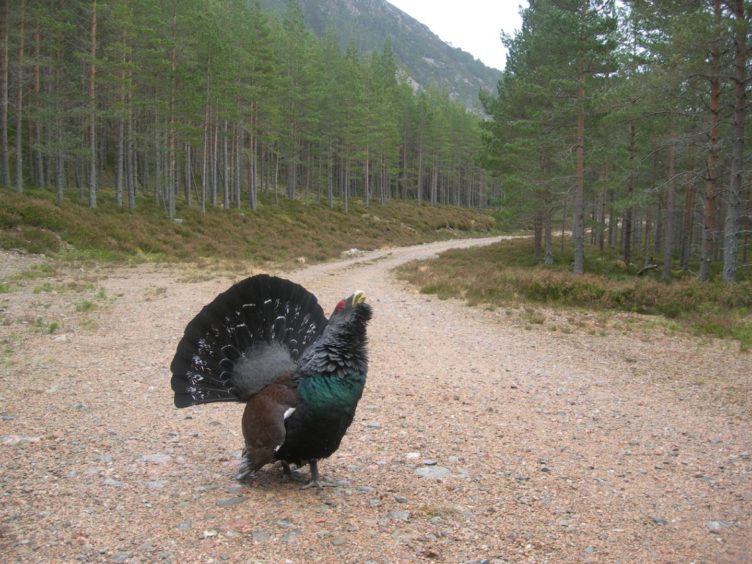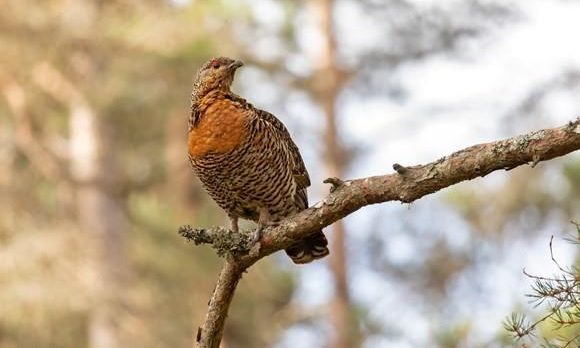Conservationists are using hidden cameras to monitor the capercaillie population without disturbing the endangered birds.
The cameras – dotted across the 231 sqm of landscape that forms the Cairngorms Connect project area – have captured more than 3,000 images and some video of capercaillie.
The species is at real risk of extinction in the UK, with only 542 of the birds estimated to be left in Scotland, according to data released in September.
Capercaillies that hatched and survived in 2022 on camera
Cairngorms Connect is a partnership that is working to enhance habitats, species and ecological processes within areas of Cairngorms National Park.
Forestry and Land Scotland (FLS), one of the partners, placed the inexpensive cameras in prime locations to help ecologists determine whether efforts to improve capercaillie breeding numbers have been successful this year.
The images are being processed and will help the team assess how many capercaillie hatched and survived during the 2022 breeding season, which ran from March to September.
The work was undertaken by Jack Bamber, a PhD student at Aberdeen University.
Speaking on BBC’s Good Morning Scotland, he said: “Traditionally, people used to monitor capercaillie broods by flushing them out with highly-trained pointer dogs.
“Now, with inexpensive camera technology, we can keep an eye on them without disturbing or distressing them.
“Humans may like a bubble bath, but capercaillie love to bathe in dust. Their dust baths tend to be in areas of exposed earth, like upturned root plates of trees that have fallen over.
“They bathe in the dust to get rid of lice and pathogens, and it helps remove excess oil from their feathers, among other things.
“We placed over 80 cameras around dust baths and we’ve now collected over 300,000 images, around 3,000 of which contain capercaillie.”
Mr Bamber’s work has been funded by FLS, Wildland Limited and a Natural Environment Research Council doctoral training programme.
The latest national survey in Scotland, conducted over the winter of 2021/22, found the population had dropped around 50% since the last survey six years ago and is now at a critically low level.
Climate change reducing numbers of rare birds
Conservation scientists said the decline is being fuelled by a combination of factors which reduce capercaillie survival and breeding success.
These include climate change, the cold, wet spring weather which has an impact on the fitness of female birds before the breeding season and affects chick survival, along with predation and a habitat which remains fragmented in places despite ongoing work to enhance it.
Land managers and organisations have put special management procedures in place to try to protect them, like removing deer fencing in forests with capercaillie, or making fences much more visible.
As part of the Cairngorms Connect Predator Project, food for the capercaillie’s predators is tactically placed in the landscape in a bid to distract and satisfy the predators, in order to keep capercaillie nests and chicks safe.



Conversation